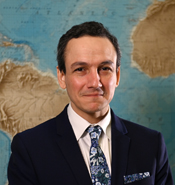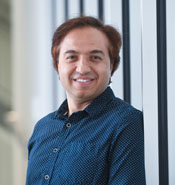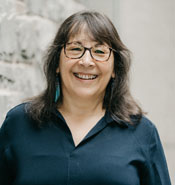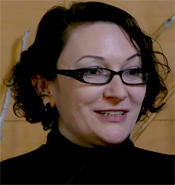To attract the world’s best researchers, �鶹��ý must provide the tools and spaces they require to meet their goals. To build labs, purchase technical equipment and acquire leading-edge soft- and hardware, the university receives substantial support from the Canada Foundation for Innovation’s John R. Evans Leaders Fund and Research Nova Scotia, which together have contributed $3.7 million in new funding for infrastructure.
“Great researchers need great facilities. The support of our funders helps ensure we have the leading-edge research environment necessary to continue recruiting and retaining top talent from around the globe,” says Alice Aiken, Dal's vice-president research and innovation.
From new capabilities in nuclear magnetic resonance to the creation of dedicated spaces to conduct Indigenous research, �鶹��ý is now set to empower its scholars to engage in some of the most sophisticated research in the world.
Read more about the scholars who are receiving infrastructure funding and the research they will pursue.
, Faculty of Medicine
Understanding the signals that allow us to see
Dr. Agosto explores the mechanisms that allow our eyes to detect the world around us and transmit information to the brain. Through experiments in mice and cell culture models, she aims to understand which proteins are required for signal transmission between cells, how they get to the right location, and how they work together. She anticipates that this work will help future efforts to restore light sensitivity following the death of rods and cones that occurs as a consequence of inherited retinal degeneration diseases.
 Kiran Banerjee, Faculty of Arts and Social Sciences
Kiran Banerjee, Faculty of Arts and Social Sciences
Creating a lab to analyse forced migration
The number of people displaced worldwide��exceeds 84 million,��with 2021 having the highest figures on record and growing with increasing speed. The International Migration Research Lab led by Dr. Banerjee responds to this challenge with technical capacity and methodological expertise to collect, analyze, and disseminate qualitative data on migration governance and refugee policy. Outfitted with transcription software and equipment, qualitative data analysis software, and focus-group and research collaboration facilities, the lab enables knowledge generation and mobilization at domestic and international levels.
, Faculty of Medicine
Investigating why men are more likely to die of right heart failure
When patients have increased blood pressure in the lungs or diseases of the left side of the heart, the right ventricle is exposed to higher pressure that can lead to heart failure. Men are far more likely to die from this condition than women. Dr. Chaudhary will investigate��how right ventricles react differently to stress��in males and females and study the mechanisms underlying differential blood vessel growth in female versus male right ventricles, focusing on the role of sex hormones and blood vessel stem cells. Using the knowledge he gains; he and his team will develop and test new treatment options for patients suffering from right heart failure.
, Faculty of Medicine
Examining why inflammation leads to disease
The health consequences of unwanted inflammation have been known for many years in academic and public settings. Ideally, inflammation rapidly clears pathogens and damaged tissue to return tissues to their previous healthy state. However, chronic inflammation can lead to inflammatory bowel disease, heart disease, arthritis, and hyperinflammatory conditions, such as seen in septic and severe COVID-19 patients. Using critical scientific equipment, Dr. Fairn and his research team are working to understand better the mechanisms of inflammation and its contributions to disease.
 Mohammad Hajizadeh, Faculty of Health
Mohammad Hajizadeh, Faculty of Health
Working to reduce inequalities in healthcare
Equity in health and healthcare has been a long-standing policy objective both within Canada and globally. Policymakers are challenged to reduce health inequities due to a limited understanding of how to effectively influence the social determinants of health. Dr. Hajizadeh’s research program will use cutting-edge interdisciplinary methods to examine socioeconomic inequalities in health and healthcare and their causes, as well as the effects of health and public policies on health and healthcare equity. The overall aim of��his��research program is to inform policymaking that reduces inequities in health and healthcare.
 Sherry Pictou, Faculties of Law and Management ��
Sherry Pictou, Faculties of Law and Management ��
Building a research space to enhance Indigenous participation
Indigenized research spaces are important for research engaging with women and gender diverse persons and building linkages between Mi’kmaw and Indigenous peoples and academics, government, the community of Nova Scotia and beyond. Dr. Pictou will create the L’nuey Governance Research Centre (L’nuey – Belonging to the L’nu – the people) at �鶹��ý to support her work examining a re-grounding of Indigenous women and governance based on Indigenous land-based laws and treaty relations. She will generate and apply a gender analysis from an Indigenous perspective to enhance Indigenous participation in governance and decision-making processes related to environmental and natural resource governance.
, Faculty of Medicine
Leveraging nuclear magnetic resonance to improve health
Led by Dr. Rainey, this project will establish a biomolecular nuclear magnetic resonance spectroscopy facility at �鶹��ý. Dr. Rainey and his team will use the sophisticated equipment to understand how spider silk proteins can be modified to design new biomaterials that can be used as sutures or for regeneration of injured nerves. The equipment will also be used to study hormone-receptor systems with the aim of creating treatments and preventive measures for conditions such as cardiovascular disease, cancer, and viral infection.
 Margaret Robinson, Faculty of Arts and Social Sciences
Margaret Robinson, Faculty of Arts and Social Sciences
Creating a Mi’kmaw Cultural Research Lab
Dr. Robinson will create a Mi’kmaw Cultural Research Lab to support community-engaged social science research immersed in Mi'kmaw culture and language. The research lab will conduct community-driven social science research with Indigenous people, using Indigenous methods and field-tested technology, and will support Indigenous data ownership control, access, and possession. The facility will provide a commitment to cultural safety and assert the space as part of Mi'kma'ki, reinforcing Indigenous belonging in educational spaces.
 Lauren Somers, Faculty of Engineering
Lauren Somers, Faculty of Engineering
Harnessing mountain wetlands for water supply and carbon absorption
Because wetlands remain waterlogged year-round, plant matter in the soil is slow to decompose, making them globally important carbon sinks. However, the role of mountain wetlands in storing and releasing water and carbon is not well understood. Climate is changing more quickly in mountain regions which may be profoundly changing their ability to store carbon and water. Dr. Somers and her team aim to develop a new understanding of mountain wetlands to determine how best to manage or restore these important landscapes in the face of climate and land use change and to maximize their capacity to supply potable water and absorb atmospheric carbon.
, Faculty of Medicine
Designing early interventions to reduce severe mental illness
Dr. Uher examines the development of mental health and tests interventions to reduce the risk of severe mental illness in young people. He and his research team have found that mental illness, and depression in particular, is predictable and may be preventable. He has shown that a mix of clinical interviews, speech analysis, sleep and brain measurements can identify risk and resilience and predict treatment outcomes. This funding will help young people participate in a one-stop assessment that provides accurate information about their health and indications for early personalised treatment.

